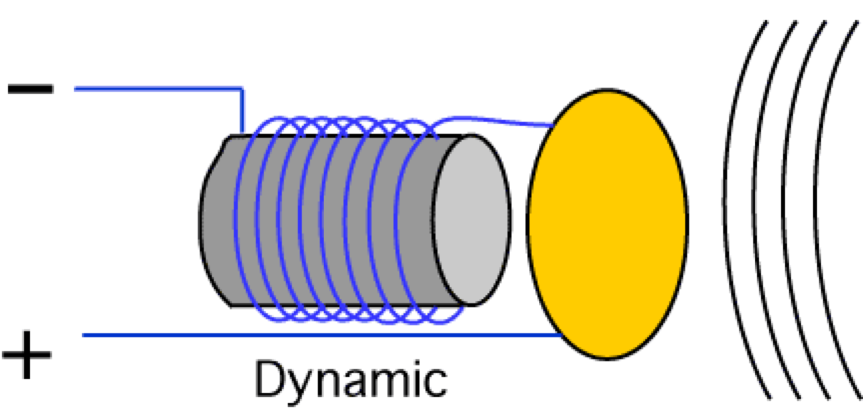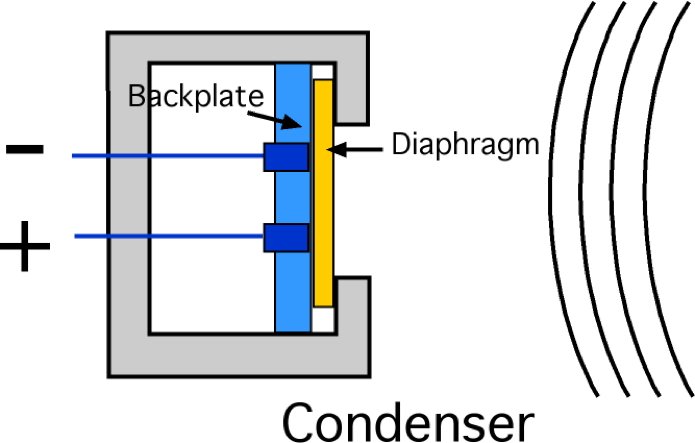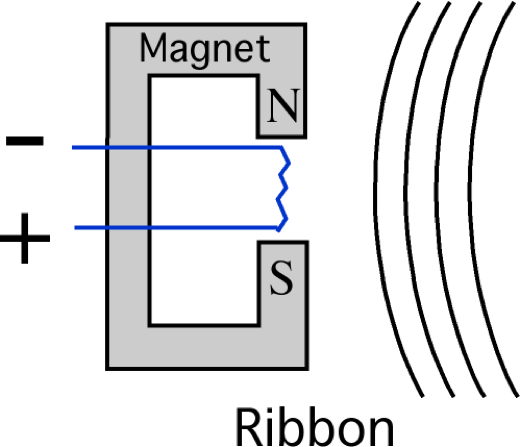So far, we’ve covered an introduction to microphones and how their response to sound frequencies affects quality in Part 1 and how directionality works in Part 2. There is one more primary method of defining microphone capabilities that overlays the impact of frequency response and directionality. I like to refer to it as design type.
Design type defines a microphone based on it’s design. I know – call me Captain Obvious! To be more specific, there are a variety of methods used to convert sound waves in the air (or other media) into electrical impulses that can be transmitted and recorded. Using different technologies, we are able to capture sound with varying techniques that create unique abilities. These design types fall into four categories: dynamic, condenser, ribbon and boundary mics.
If you’ve ever spoken to an audience, or sang using a PA system, you likely used a dynamic microphone. All mics are designed to generate fluctuations in an electrical current. Dynamic mics do this by vibrating a wire coil that is wrapped around a magnet – sound is detected by a thin disk that vibrates in reaction to sound waves in the air.
Each design type has different qualities. Dynamic mics are typically cardioid, directional mics. They tend to be very rugged, allowing them to “hear” loud volume levels without distortion in the signal, nor damage to the device. They also tend to be less sensitive to physical handling – vibrations from the mic’s case don’t pass easily to the capsule that captures the sound. Dynamic mics also output a strong enough signal to pass to the recording or mixing device. All of these qualities add up to make dynamic mics very popular for on-stage, hand-held microphones. Their ability to handle loud sources also makes them great for recording drums and guitar amps.
Condenser mics are the most common mic in use, primarily due to the fact that a special variety, electret condensers, can be designed at small sizes and are reasonably rugged as well. This allows them to be put into any device that can record or transmit sound, like our phones. Electrets are great, although they typically do not respond to a full frequency range – handy in some situations and not in others 🙂 Condensers use the resistance between two plates separated by a tiny gap that varies as the diaphragm (sensor plate) vibrates.
Most pros use a standard condenser mic. They tend to have flatter, more even frequency response up into the high frequency ranges. They are also more sensitive to lower volume levels. Because of this, condensers tend to be popular for higher quality recording of sound sources across the frequency spectrum. The extra sensitivity means that condensers also are easily overloaded by loud sources, and can possibly be damaged. Condensers also come in a wide variety of designs, each with it’s particular sound quality. You’ll see music recording engineers use them for acoustic guitars, cymbals, brass instruments (at a distance) and many other sources. Many shotgun mics are also condensers, allowing isolated sound to be captured from a distance.
One final detail to know about regular condensers – they output a very weak signal that must be boosted to send down a cable. This is commonly accomplished with a battery in the mic case or via phantom power – power to boost the signal that is provided by a mixing console or recording device. This is a design aspect to consider when purchasing mics – do I have a device that sends phantom power and/or does the mic design incorporate a battery?
Ribbon microphone technology has been in use since the early days of audio reproduction. They were very popular during the mid-20th century, and have seen a resurgence in popularity in the past decade due to their very accurate reproduction of captured sounds. Ribbon mics use a simple design: a metal ribbon with a current passing through it is suspended between two poles of a C-shaped magnet. When vibrated, the current in the ribbon fluctuates as it moves in the magnetic field.
Ribbon mics can sound very clear, yet they are also easily damaged. They also tend to be quite expensive compared to other types. For this reason, you’ll probably only find them in use in a recording studio. Also, no need for phantom power here – in fact phantom power can easily damage a ribbon mic.
Boundary Microphones
Boundary mics, sometimes referred to as PZM microphones, are different than the rest because they are generally attached to a surface, eliminating several issues that occur with the other mic designs (we’ve only scratched the surface here… no pun intended!). Boundary mics usually contain a condenser capsule mounted on a plate that allows the mic capsule to be flush with or slightly above the surface. Engineers use them for a variety of purposes: they can be placed on walls in a hall to capture the room ambience; attached to a piano or it’s sound board for a very direct recording, or inserted into an acoustic guitar to capture the direct vibrations of the wood box.
This wraps up our overview of microphone types and capabilities. This information will help make some choices when working to record better sound for your next project. As mentioned, there are many more factors that come into play when using mics… I’ll return to microphone techniques down the road.
Have a great Memorial Day Weekend! I’ll be back next week with more Media Production Tips!
Mike




